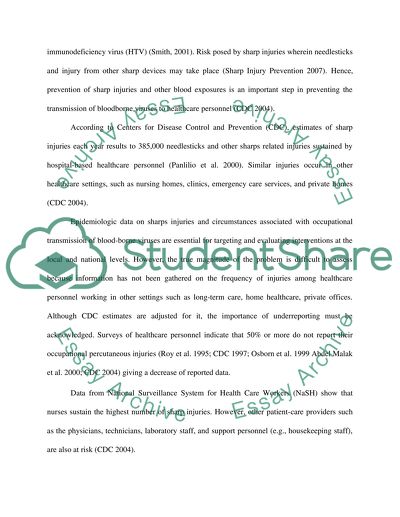Cite this document
(“Management of Sharp Injuries Assignment Example | Topics and Well Written Essays - 2750 words”, n.d.)
Management of Sharp Injuries Assignment Example | Topics and Well Written Essays - 2750 words. Retrieved from https://studentshare.org/health-sciences-medicine/1511172-management-of-sharp-injuries
Management of Sharp Injuries Assignment Example | Topics and Well Written Essays - 2750 words. Retrieved from https://studentshare.org/health-sciences-medicine/1511172-management-of-sharp-injuries
(Management of Sharp Injuries Assignment Example | Topics and Well Written Essays - 2750 Words)
Management of Sharp Injuries Assignment Example | Topics and Well Written Essays - 2750 Words. https://studentshare.org/health-sciences-medicine/1511172-management-of-sharp-injuries.
Management of Sharp Injuries Assignment Example | Topics and Well Written Essays - 2750 Words. https://studentshare.org/health-sciences-medicine/1511172-management-of-sharp-injuries.
“Management of Sharp Injuries Assignment Example | Topics and Well Written Essays - 2750 Words”, n.d. https://studentshare.org/health-sciences-medicine/1511172-management-of-sharp-injuries.


